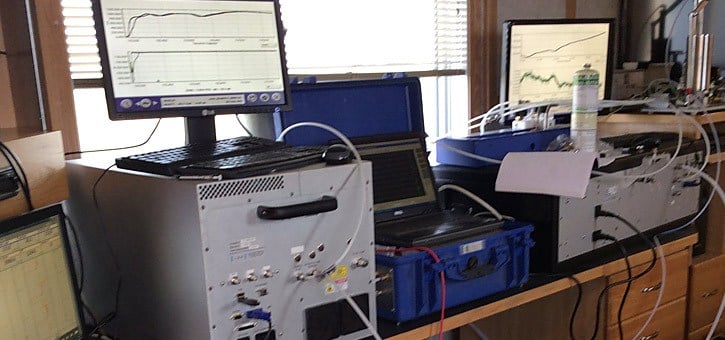I was recently working on a project examining odours and had to plan out the difficult logistics of having samples shipped out same day to the laboratory for analysis because of literature documented instability. As I work around these logistics, I can see why many people choose to ignore the fact as it does make life in the field difficult.
Reduced sulphur compounds (RSCs) are a highly reactive group of compounds that have the familiar odour of rotten eggs. They are the stinky components of sour gas and are present in many crude oils, whether classified as sour or sweet. Crude is considered sour when its total sulfur content is >0.5%.
RSCs consist of a variety of sulfur bearing compounds such as hydrogen sulfide (H2S), carbonyl sulfide, and many different types of mercaptans. Odours associated with oil and gas facilities can generally be linked to these types of compounds as they can be detected by the human nose at very low concentrations. For example, dimethyl sulfide has an odour threshold of approximately 2.2 parts per billion.
These compounds are sampled from the air using stainless steel canisters. These canisters are evacuated so that when the valve is opened, a known volume of air is pulled into the canister. This air sample is then shipped to the laboratory for analysis of its contents. Special canisters have been developed that have coatings on the inside (fused silica lined) which are meant to prolong the life of these reactive compounds as it is well known that sulfur compounds will reactive with the regular stainless steel canisters. The next fact that is the one most commonly ignored is that moisture content in any canister (whether it is fuse silica lined or not) will cause many of the sulfur compounds to breakdown – very, very quickly.
How quickly, do you ask? Within 48 hours or so, some labs claim. A peer reviewed publication by Ochiai et al documented this (J. Environ. Monit., 2002,4, 879-889) and most laboratories have their own evidence that shows this as well.
So, if you are running sulfur compounds in air, get them run immediately by the laboratory. I shoot for next day analysis.
Moisture plays the major role in breakdown of many sulphur compounds in the sampling canisters and there are techniques to remove the moisture during sampling. That would be the other option if you cannot get your samples back in a timely manner. These techniques dry the air as it is being sampled. This will prolong the hold time of your sample but cannot extend it indefinitely.
Bottom line, sulfur compound analyses require special considerations that must be accommodated if you want dependable and representative results.




